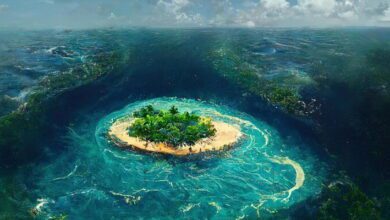Historical Biogeography MCQs with Answers

Historical Biogeography MCQs evaluate your understanding of the geological and evolutionary forces behind species distribution patterns through time. This Historical Biogeography Quiz addresses plate tectonics, continental drift, vicariance, dispersal processes, and the use of fossils to track ancestral lineages. Study major concepts such as biogeographic realms, endemism, phylogeography, and the influence of climatic changes on species evolution. These Historical Biogeography MCQs assist students, ecologists, and scientists in testing their knowledge regarding how species distributions have evolved across geological history. Take this free Historical Biogeography quiz to reinforce your concepts and master essential topics in evolutionary biology and ecology.
| Historical biogeography is the study of species and ecosystem distribution through geological time but focused on how the historical events and processes have led to present biodiversity. It can be said that it is basically a gathering of geology, paleontology, and ecology for the purpose of trying to understand how historical factors affect the spatial distribution of organisms. Historical biogeography is concerned with the process of plate tectonics and continental drift. This refers to movement in the Earth’s tectonic plates that has, in turn, resulted in the continents being formed then broken apart. These usually result in barriers and corridors that have played a great role in species migration and evolution. For instance, Pangaea split into landmasses whereby these parts were separated, thus there was development of peculiar types of flora and fauna on other such continents, for instance, Africa, South America, and Australia. Past climatic change is another very important concept of historical biogeography regarding how the species reacted to these changes. There have been several times when ice ages and other climatic shifts and sea-level changes forced the species either to move or adapt to become extinct; however, it can be both in fossil records and current biodiversity patterns. Historical biogeography further outlines the influence historical variables, such as episodes of glaciation and volcanic eruptions, have on species distribution. The study of these influences would go a long way to better understanding the processes leading to the present-day distribution of plants and animals, providing useful hints into conservation strategies and evaluating the potential outcome of future environmental changes. |
Historical Biogeography Online Quiz
By presenting 3 options to choose from, Historical Biogeography Quiz which cover a wide range of topics and levels of difficulty, making them adaptable to various learning objectives and preferences. You will have to read all the given answers of Historical Biogeography Questions and Answers and click over the correct answer.
- Test Name: Historical Biogeography MCQ Quiz Practice
- Type: Quiz Test
- Total Questions: 40
- Total Marks: 40
- Time: 40 minutes
Note: Answer of the questions will change randomly each time you start the test. Practice each quiz test at least 3 times if you want to secure High Marks. Once you are finished, click the View Results button. If any answer looks wrong to you in Quizzes. simply click on question and comment below that question. so that we can update the answer in the quiz section.
Download Certificate of Quiz Historical Biogeography
On the end of Quiz, you can download the certificate of the quiz if you got more than 70% marks. Add a certificate to your job application or social profile (like LinkedIn) and get more job offers.
Download Historical Biogeography MCQs with Answers Free PDF
You can also download 100 Historical Biogeography Questions with Answers free PDF from the link provided below. To Download file in PDF click on the arrow sign at the top right corner.
If you are interested to enhance your knowledge regarding English, Physics, Chemistry, Computer, and Biology please click on the link of each category, you will be redirected to dedicated website for each category.




